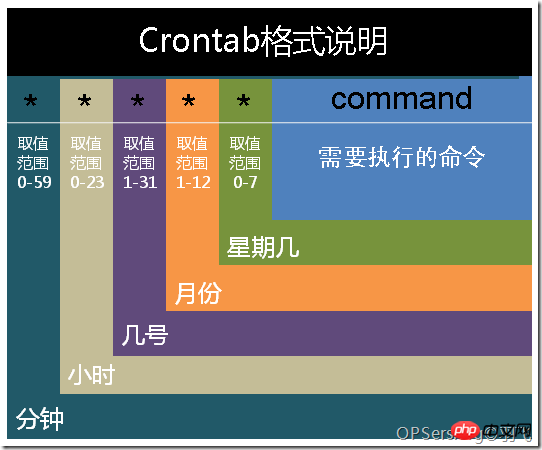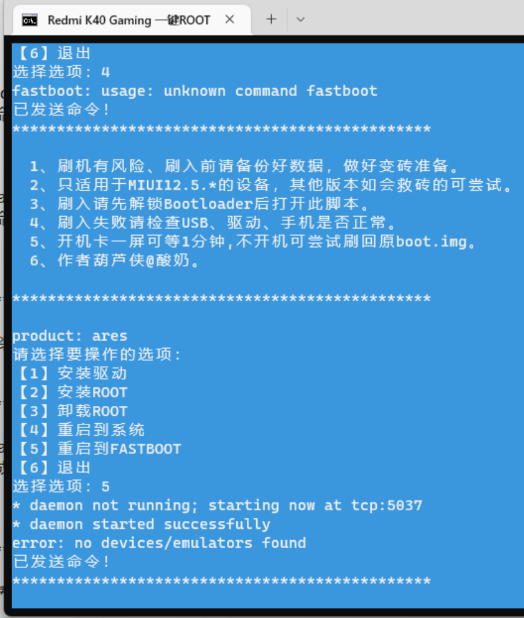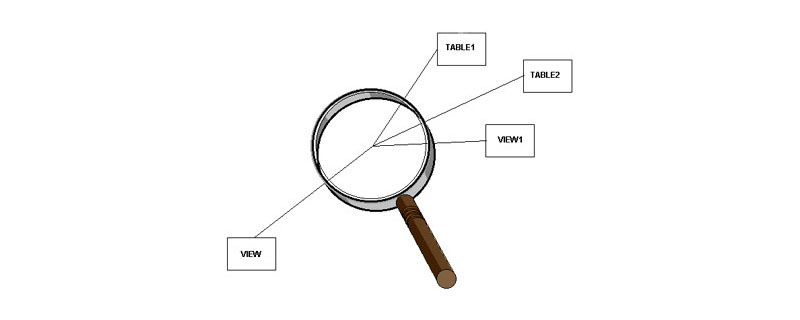本篇文章给大家带来的内容是关于mysql自定义函数与存储过程的详细介绍(附代码),有一定的参考价值,有需要的朋友可以参考一下,希望对你有所帮助。
1、前置条件
mysql数据库中存在表user_info,其结构和数据如下:
mysql> desc user_info; +-----------+----------+------+-----+---------+-------+ | Field | Type | Null | Key | Default | Extra | +-----------+----------+------+-----+---------+-------+ | id | int(10) | NO | PRI | NULL | | | name | char(20) | NO | | NULL | | | passwd | char(40) | NO | | NULL | | | email | char(20) | NO | | NULL | | | phone | char(20) | NO | | NULL | | | role | char(10) | NO | | NULL | | | sex | char(10) | NO | | NULL | | | status | int(10) | NO | | NULL | | | createAt | datetime | NO | | NULL | | | exprAt | datetime | NO | | NULL | | | validDays | int(10) | NO | | NULL | | | delAt | datetime | YES | | NULL | | +-----------+----------+------+-----+---------+-------+ 12 rows in set (0.10 sec) mysql> select * from user_info; +----+--------------+----------+------------+-------------+--------+------+--------+---------------------+---------------------+-----------+-------+ | id | name | passwd | email | phone | role | sex | status | createAt | exprAt | validDays | delAt | +----+--------------+----------+------------+-------------+--------+------+--------+---------------------+---------------------+-----------+-------+ | 1 | StephenWang7 | py123456 | 123@qq.com | 15103887470 | admin | male | 200 | 2019-04-12 20:11:30 | 2019-04-19 20:11:30 | 30 | NULL | | 2 | StephenWang8 | 123456 | 123@qq.com | 15103887470 | viewer | male | 200 | 2019-04-12 20:11:30 | 2019-04-19 20:11:30 | 30 | NULL | +----+--------------+----------+------------+-------------+--------+------+--------+---------------------+---------------------+-----------+-------+ 2 rows in set (0.00 sec)
2、自定义函数
函数:可以完成特定功能的一段SQL集合。MySQL支持自定义函数来完成特定的业务功能。
创建自定义函数(User Defined Function 简称UDF)的语法如下:
create function ([参数1] [类型1], [参数N] [类型N]) returns return
调用UDF的语法如下:
select ([参数])
创建无参的UDF
示例1:查询user_info表中有多少条记录
#定义函数 mysql> create function user_info_count() -> returns int(10) -> return -> (select count(*) from user_info);
调用函数user_info_count()
mysql> select user_info_count(); +-------------------+ | user_info_count() | +-------------------+ | 2 | +-------------------+ 1 row in set (0.00 sec)
创建有参UDF
示例2:根据id查询用户name。
#定义函数 mysql> create function queryNameById(uid int(10)) -> returns char(20) -> return -> (select name from user_info where id=uid); Query OK, 0 rows affected (0.01 sec)
调用函数,查询id为1的用户名称。
mysql> select queryNameById(1); +------------------+ | queryNameById(1) | +------------------+ | StephenWang7 | +------------------+ 1 row in set (0.00 sec)
查看UDF
查询系统中所有的UDF
show function status;
查询指定的UDF
# show create function 函数名称; mysql> show function queryNameById; ERROR 1064 (42000): You have an error in your SQL syntax; check the manual that corresponds to your MySQL server version for the right syntax to use near 'queryNameById' at line 1 mysql> show function queryNameById(); ERROR 1064 (42000): You have an error in your SQL syntax; check the manual that corresponds to your MySQL server version for the right syntax to use near 'queryNameById()' at line 1 mysql> show create function queryNameById(); ERROR 1064 (42000): You have an error in your SQL syntax; check the manual that corresponds to your MySQL server version for the right syntax to use near '()' at line 1 mysql> show create function queryNameById; +---------------+-------------------------------------------------------------------------------------------------------------------------------------------+---------------------------------------------------------------------------------------------------------------------------------------------------------------+----------------------+----------------------+--------------------+ | Function | sql_mode | Create Function | character_set_client | collation_connection | Database Collation | +---------------+-------------------------------------------------------------------------------------------------------------------------------------------+---------------------------------------------------------------------------------------------------------------------------------------------------------------+----------------------+----------------------+--------------------+ | queryNameById | ONLY_FULL_GROUP_BY,STRICT_TRANS_TABLES,NO_ZERO_IN_DATE,NO_ZERO_DATE,ERROR_FOR_DIVISION_BY_ZERO,NO_AUTO_CREATE_USER,NO_ENGINE_SUBSTITUTION | CREATE DEFINER=`root`@`localhost` FUNCTION `queryNameById`(uid int(10)) RETURNS char(20) CHARSET latin1 return (select name from user_info where id=uid) | utf8 | utf8_general_ci | latin1_swedish_ci | +---------------+-------------------------------------------------------------------------------------------------------------------------------------------+---------------------------------------------------------------------------------------------------------------------------------------------------------------+----------------------+----------------------+--------------------+ 1 row in set (0.00 sec
修改UDF
如果想要修改函数的内容,先删除后再重新创建。
删除UDF
删除UDF语法如下:
drop function ;
示例3:删除函数queryNameId后再次调用并观察现象。
mysql> drop function queryNameById; Query OK, 0 rows affected (0.45 sec) mysql> select queryNameById(1); ERROR 1305 (42000): FUNCTION rms.queryNameById does not exist mysql>
3、存储过程
存储功能和自定义函数相似,也是一组完成特定功能的SQL语句集合。把复杂或频繁调用的SQL提前写好并指定一个名称。待到要使用时,直接调用即可。
定义存储过程的语法如下:
CREATE PROCEDURE ( [过程参数[,…] ] ) [过程参数[,…] ] 格式 [ IN | OUT | INOUT ] #语法定义来自:http://c.biancheng.net/view/2593.html
创建无参的存储过程
示例4:查询用户name。
mysql> DELIMITER // mysql> craete procedure queryName() -> begin -> select name from user_info; -> end //
关于DELIMITER命令,修改MySQL结束命令的字符。默认的结束命令字符为分号,当存储过程中包含多条语句时,遇到第一个分号会作为存储过程结束的标志。这样不符合预期,因此需要修改默认结束命令字符。 DELIMITER //就是将结束命令字符修改为//。调用存储过程的命令为:call 存储过程名称。
#此时的命令的结束符号为// 不是; mysql> call queryName()// +--------------+ | name | +--------------+ | StephenWang7 | | StephenWang8 | +--------------+ 2 rows in set (0.00 sec) Query OK, 0 rows affected (0.00 sec)
创建带参数的存储过程
示例5:根据id查询name。
mysql> create procedure queryNameById -> (In uid int(15)) -> begin -> select name from user_info where id=uid; -> end -> // Query OK, 0 rows affected (0.03 sec)
调用存储过程queryNameById
mysql> call queryNameById(1); -> // +--------------+ | name | +--------------+ | StephenWang7 | +--------------+ 1 row in set (0.03 sec) Query OK, 0 rows affected (0.04 sec)
修改存储过程
如果想创建存储过程的内容可以先删除再重新创建存储过程。
查看存储过程
show create procedure
mysql> show create procedure queryNameById; -> // +---------------+-------------------------------------------------------------------------------------------------------------------------------------------+-----------------------------------------------------------------------------------------------------------------------------------+----------------------+----------------------+--------------------+ | Procedure | sql_mode | Create Procedure | character_set_client | collation_connection | Database Collation | +---------------+-------------------------------------------------------------------------------------------------------------------------------------------+-----------------------------------------------------------------------------------------------------------------------------------+----------------------+----------------------+--------------------+ | queryNameById | ONLY_FULL_GROUP_BY,STRICT_TRANS_TABLES,NO_ZERO_IN_DATE,NO_ZERO_DATE,ERROR_FOR_DIVISION_BY_ZERO,NO_AUTO_CREATE_USER,NO_ENGINE_SUBSTITUTION | CREATE DEFINER=`root`@`localhost` PROCEDURE `queryNameById`(In uid int(15)) begin select name from user_info where id=uid; end | utf8 | utf8_general_ci | latin1_swedish_ci | +---------------+-------------------------------------------------------------------------------------------------------------------------------------------+-----------------------------------------------------------------------------------------------------------------------------------+----------------------+----------------------+--------------------+ 1 row in set (0.04 sec)
删除存储过程
drop procedure
删除存储过程queryNameById
mysql> drop procedure queryNameById// Query OK, 0 rows affected (0.02 sec) mysql> call queryNameById(1)// ERROR 1305 (42000): PROCEDURE rms.queryNameById does not exist
4、总结
自定义函数和存储过程都是完成特定功能的SQL集合,那么他们有什么不同呢?
a、调用方式不同
#自定义函数 select #存储过程 call
b、自定义函数不能有输出参数,而存储过程可以。
c、自定义函数必须要包含return语句,而存储过程则不需要。
【相关推荐:MySQL教程】















